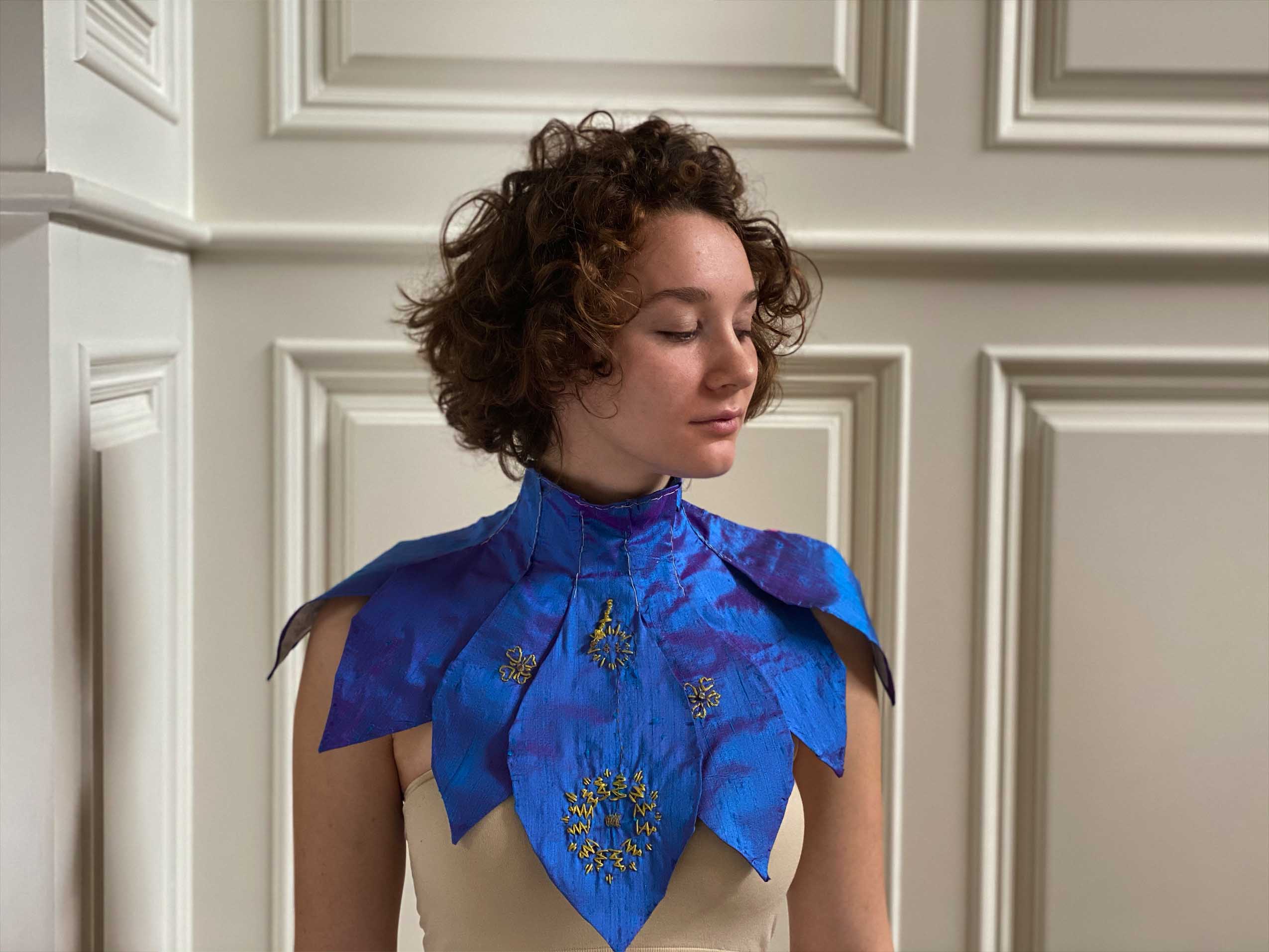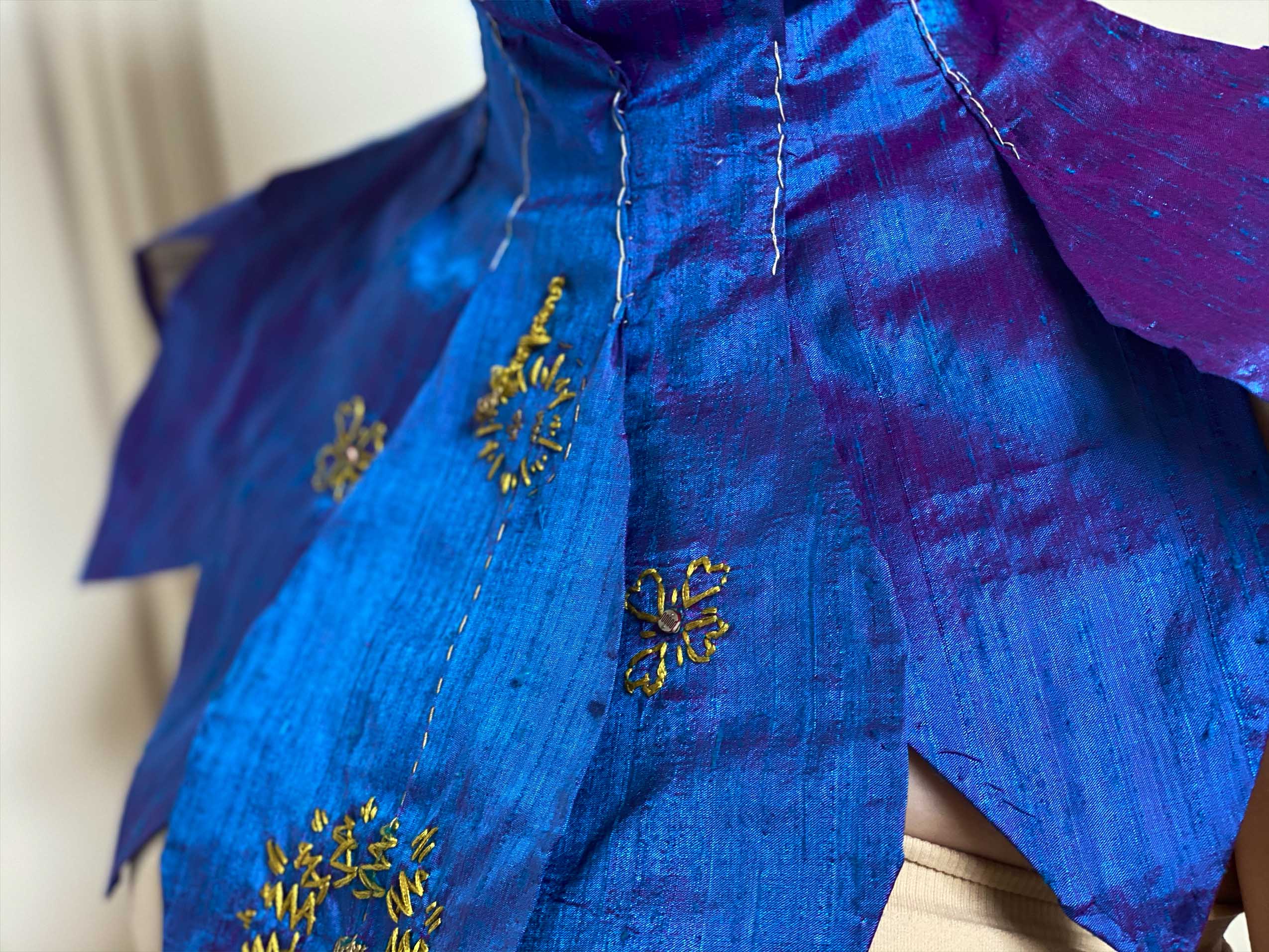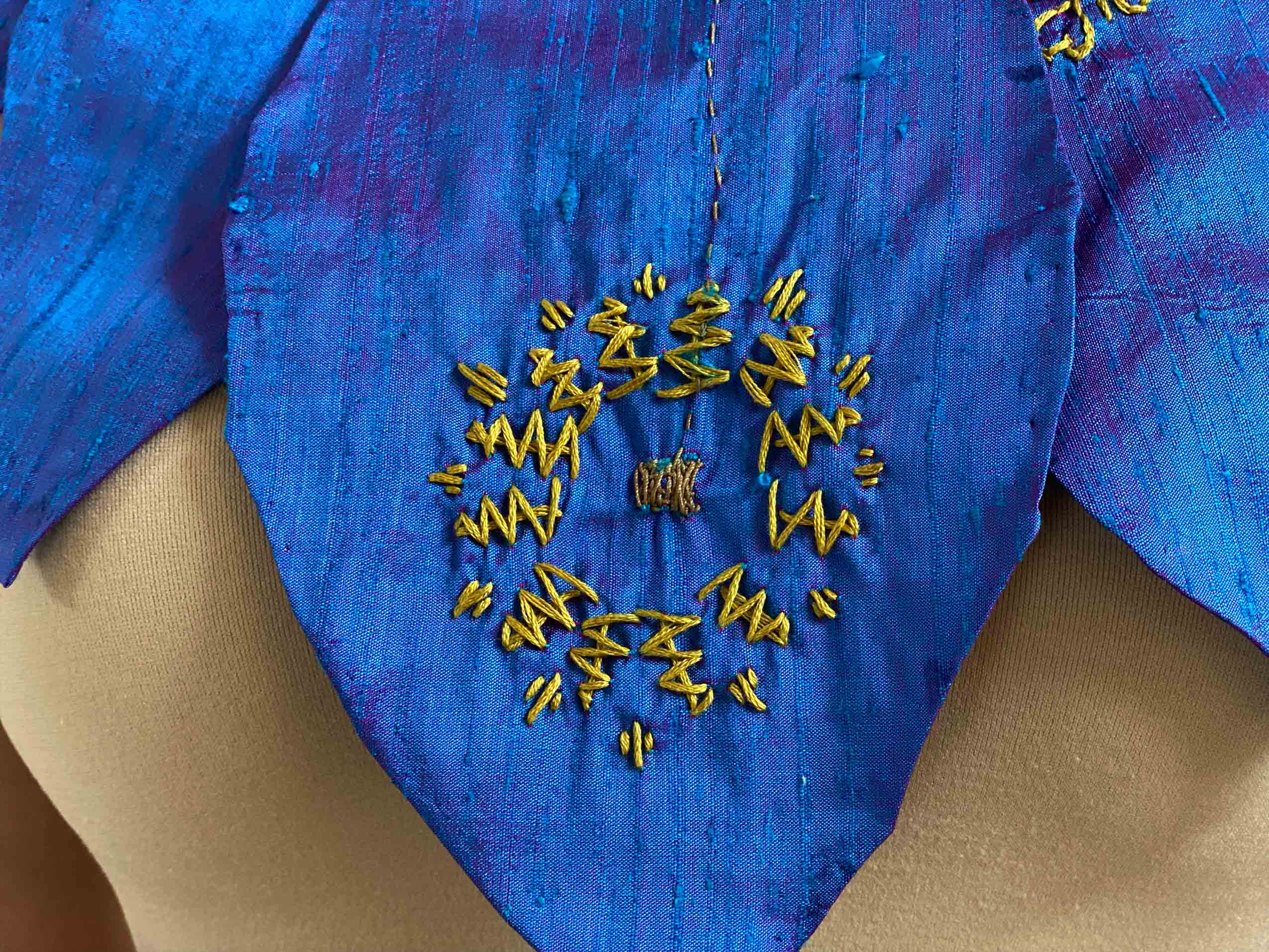E-textiles¶

Process¶
When working with electronics, I usually start with the electronics and then create the housing to form around it. I found making electronic textiles to be the exact opposite process. Everything for electronic textiles needs to be considered in relationship to the textile first. There has to be a plan for the conductive thread to make sure there is enough physical room for it, and consideration to the thickness and stiffness of the fabric used to avoid the project folding in on itself and short circuiting.
I decided to make a textile synthesizer this week. I was interested in hearing what pure electricity sounded like, and I love using sound as a feedback mechanism. I thought this would fit nicely into creating electronic textiles, because any wiring mistake in a synthesizer usually results in more sounds making the project better.

Making the synthesizer was a task in itself. I used the CD40106BE Hex Schmitt Trigger Integrated Circuit as my base. This circuit is very well documented in the book, Handmade Electronic Music The Art of Hardware Hacking by Nicolas Collins, and it was easy to follow along with the directions and create a synthesizer.
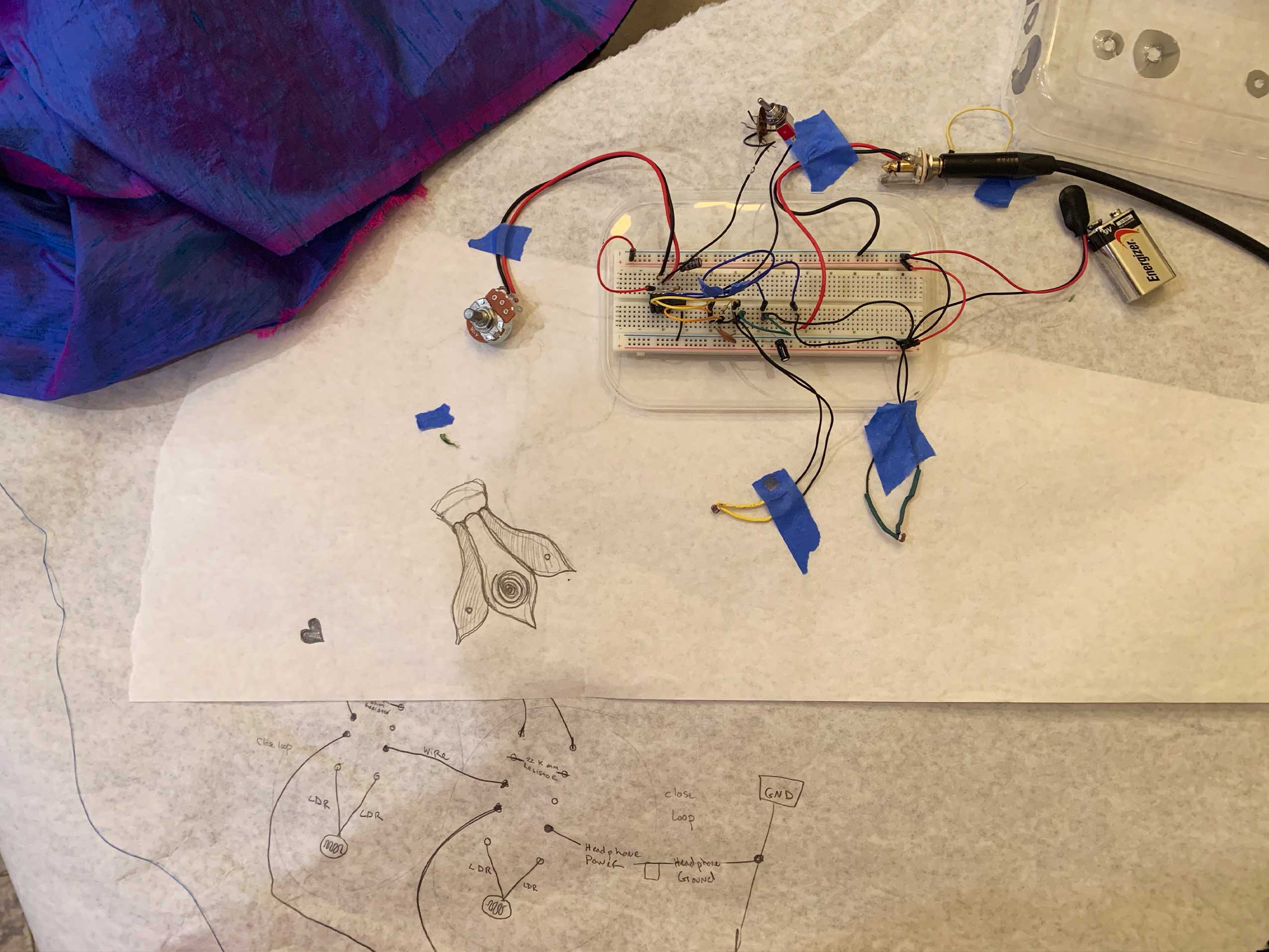
I decided to have four input mechanisms for my synthesizer, two completely made of textiles, and two that used photoresistors that sense light. The photoresistors were quite simple and easy to plug and play with. I chose them because they are small and could easily be a gem on the textile.
For my soft sensors, I made a pressure sensor and a switch. I started out by prototyping the sensors on paper with copper tape and some LED’s. This was helpful in figuring out what the sensors would physically look like. The pressure sensor was much easier to make then the switch. The pressure sensor was made by having pressure resistive material sandwiched between a ground and a power line.
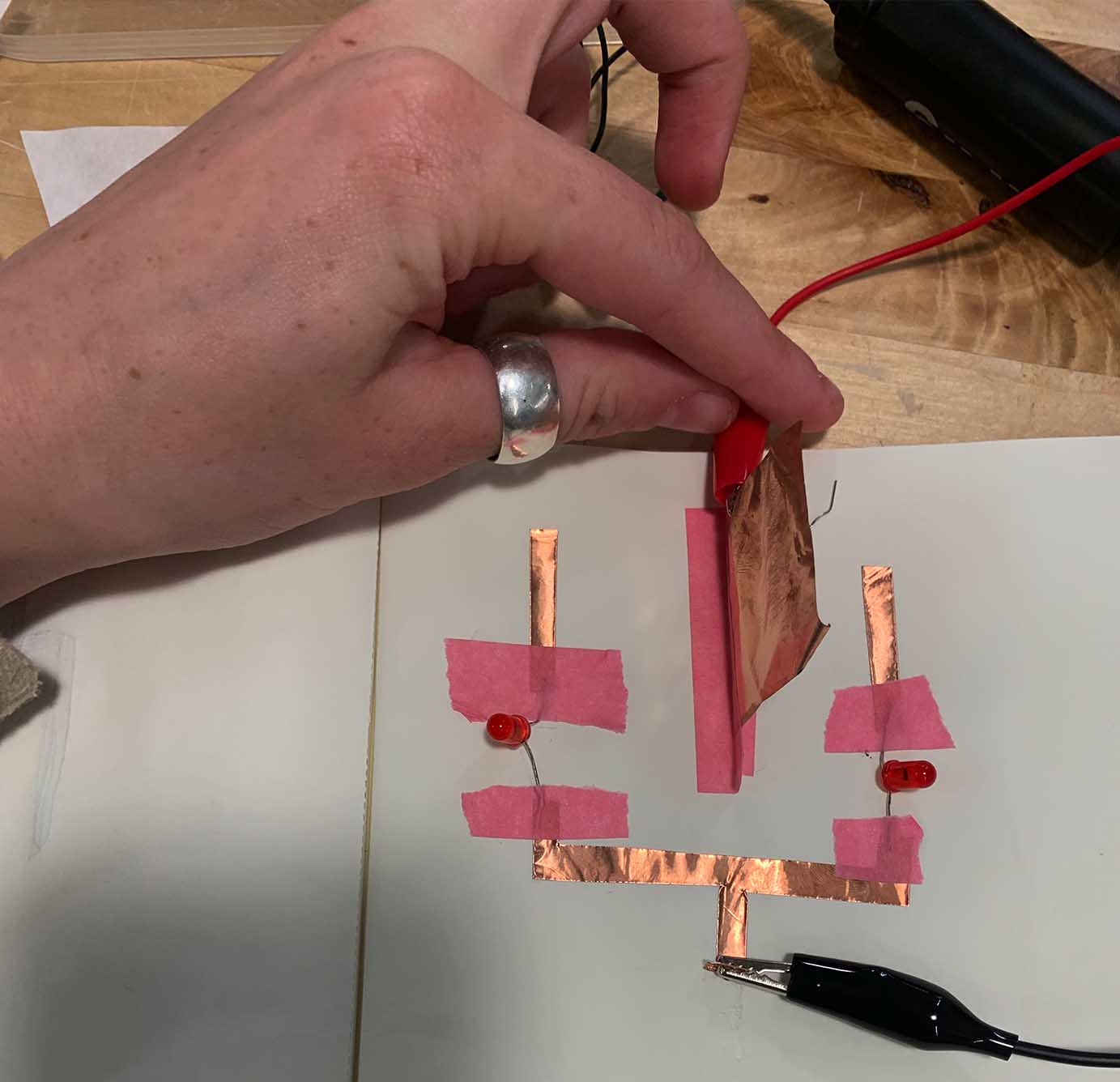
I struggled with conceptualizing how the switch would work. Ultimately, I ended up sewing a patch of conductive thread that was ground, and having a hanging bead connected to power. When I touched the bead to the ground patch, it completed the circuit and turned the switch on. I got an added bonus, when I touched the bead just with my hands it changed the resistance and made the synthesizer create an awesome secondary sound.
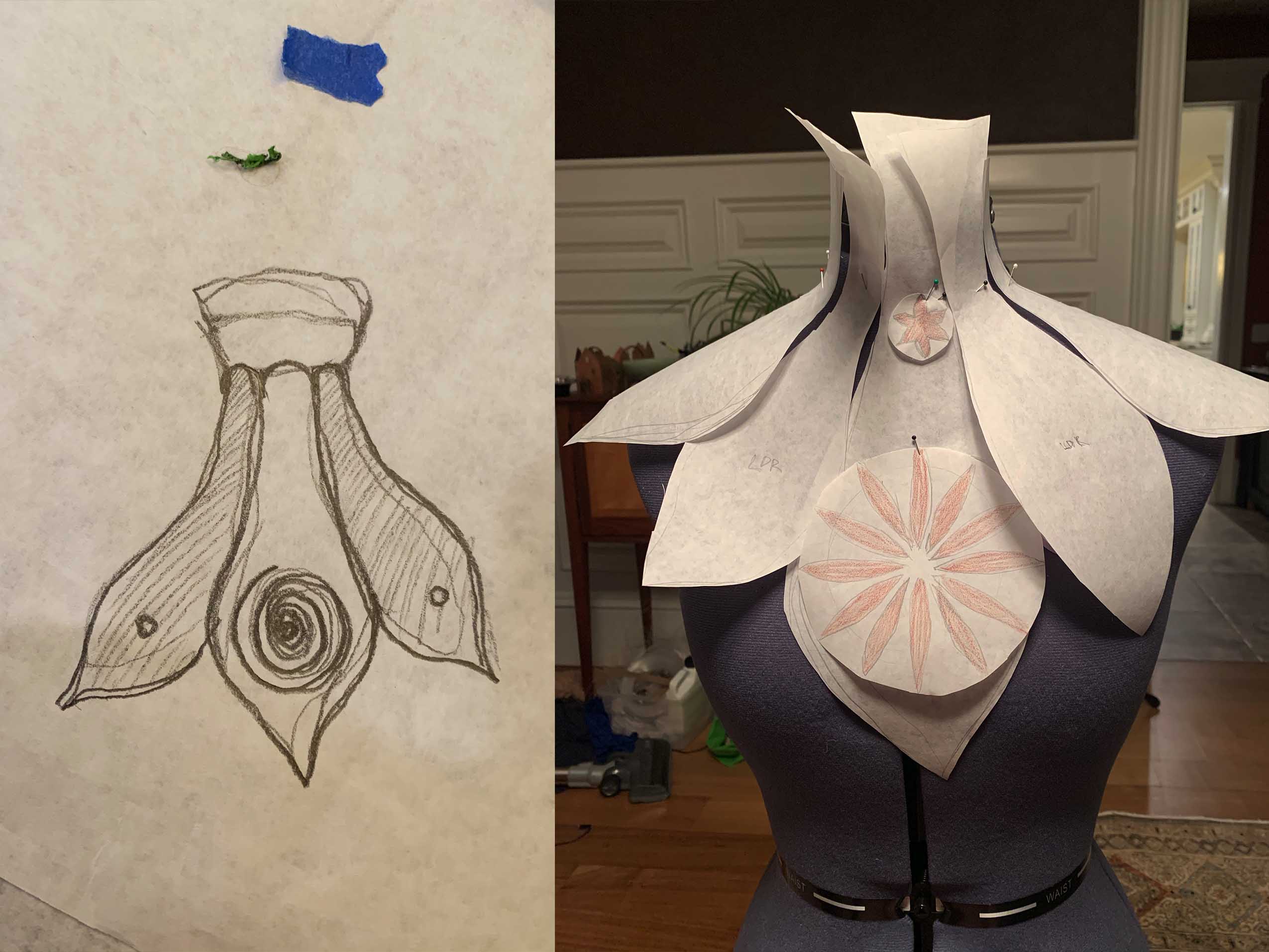
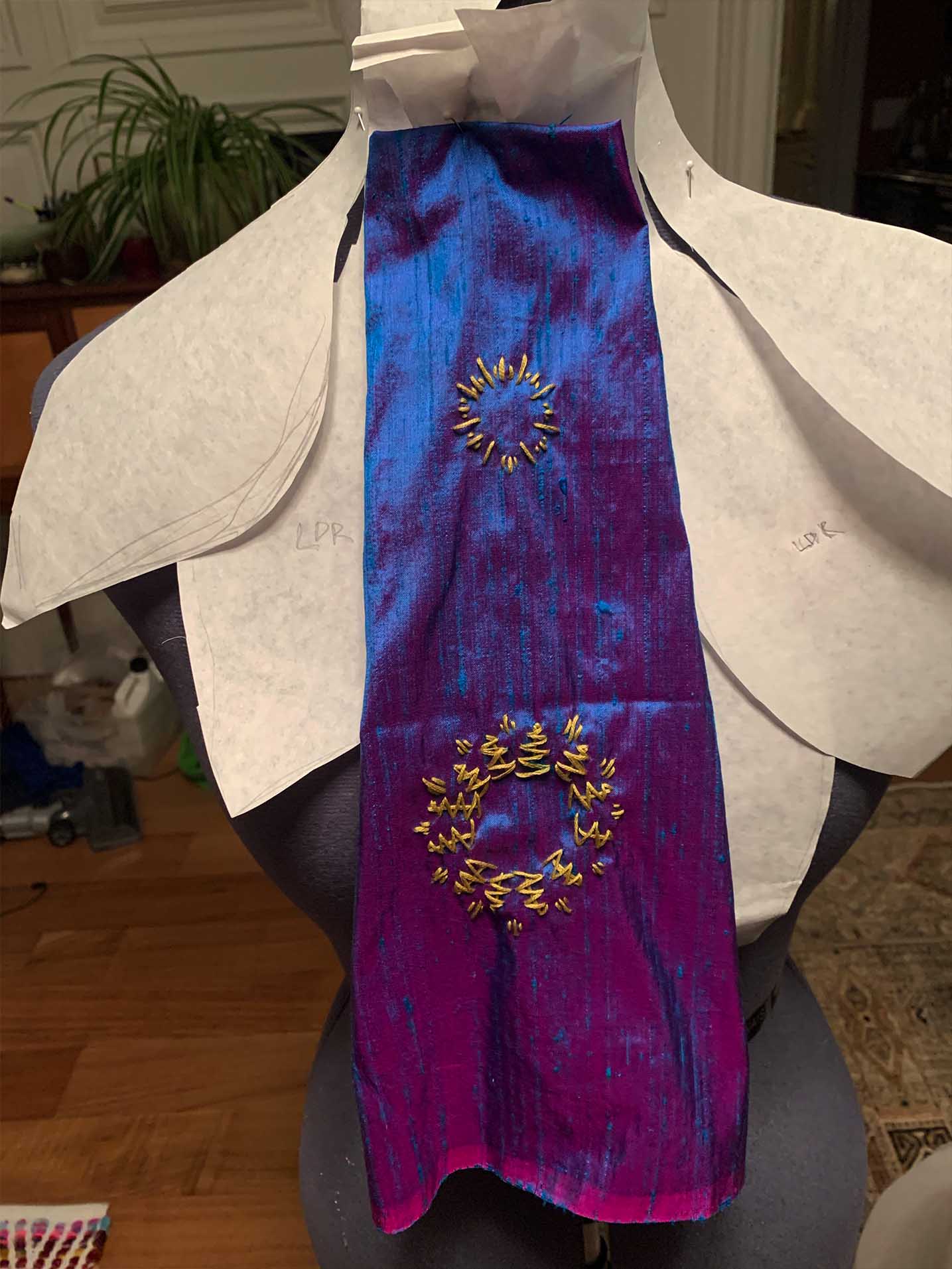
I wanted to keep the sensors on one panel in hopes of making the wiring simpler. Keeping track of the conductive thread and making sure nothing touched that wasn’t supposed to was a lot to juggle in my head. I ended up sewing the final panel in layers, with each layer of fabric having a different piece of the circuit on it, that way I was sure that nothing would touch accidentally.
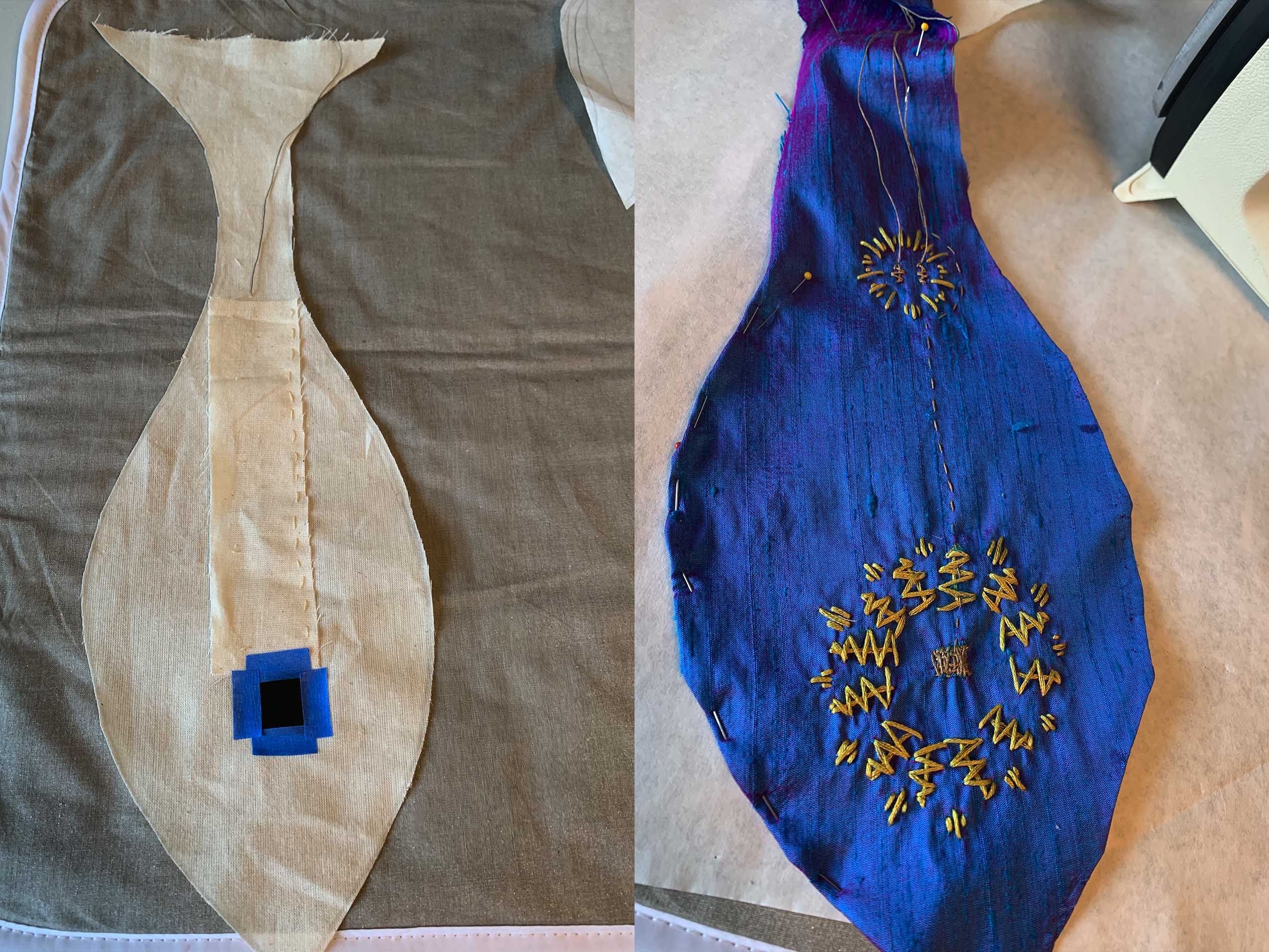
Overall, I am pleased with the project. I was inspired by the body for this piece, and I wanted to create an opportunity to play your body. I chose the position of the soft sensors based off chakras. The pressure sensor is on the heart chakra of love and compassion, and the switch sensor is on the throat chakra of communication. The embroidery surrounding each chakra references the chakra symbols. I chose to highlight these chakras to highlight compassion and empathy, something that we all need these days.
For the form, I was inspired by nature, envisioning flower petals adorning the body. I wanted to create a wearable shrine to the body, that elevated the body. I was also inspired by Ruth Bader Ginsburg’s recent death, and I wanted to create a collar in her honor.
This textile synthesizer channels energy to the chakras, allowing sound to explode out of them. Wake up and play your body.
Final¶
